Center for Skill and Entrepreneurship Development - Aerospace Engineering
Industry Inside Institute
The Center for Skill Enhancement and Development (CSED) has established an “Industry Inside Institute” in Aerospace Engineering, equipped with specialized labs to produce industry-ready engineers. These include the Composite Lab, Flight Physics Lab, Product Design and Development Lab, Advanced Structures Design Lab, Aircraft Systems Lab, Reality Lab, and Drone Design Lab. Each lab is designed to provide hands-on experience with cutting-edge technology, mirroring real-world industry standards. By simulating practical challenges and fostering innovation, the CSED ensures that students develop the critical skills required to excel in the aerospace industry, bridging the gap between academic knowledge and industrial application.
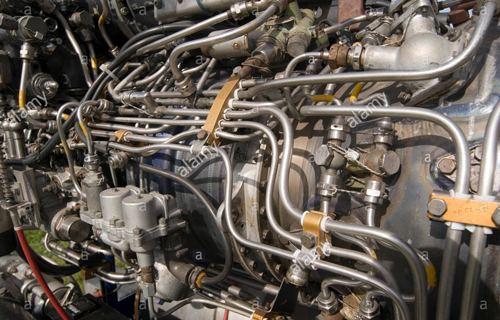
Aircraft Systems
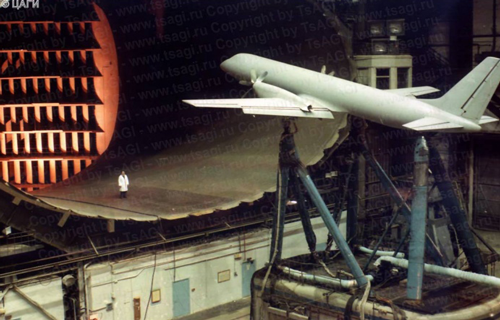
Flight Physic
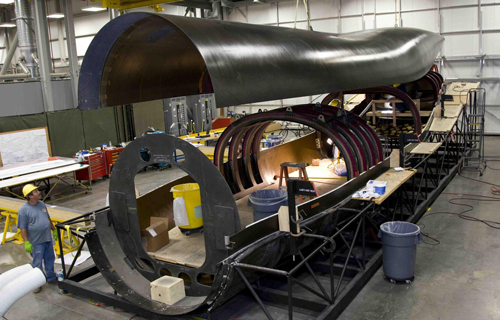
Composite

Design and Development
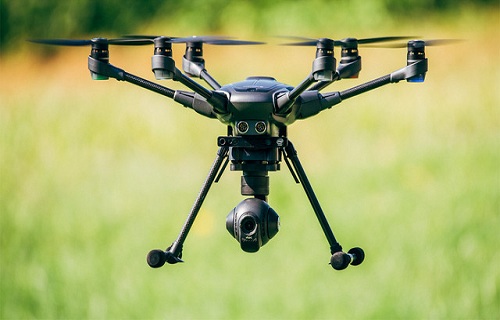
Drone Design
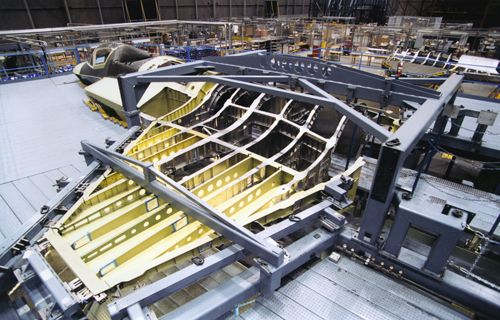
Advance Structures Design
Objectives
- Enhance Technical Expertise: Equip participants with advanced knowledge and hands-on experience in avionics and embedded systems, focusing on both hardware and software aspects.
- Bridge Industry-Academia Gap: Foster a deeper understanding of industry standards and practices in avionics and embedded systems to ensure participants are industry-ready.
- Promote Innovation: Encourage creative thinking and innovation in designing and implementing avionics systems, including the integration of IoT and AI for next-generation aerospace applications.
- Develop Problem-Solving Skills: Train participants to troubleshoot and solve complex issues in avionics and embedded systems, using a systematic and analytical approach.
- Enhance Career Opportunities: Prepare participants for career advancement in the aerospace sector by providing certification and exposure to real-world projects.
Outcomes
- Technical Proficiency: Participants will gain a strong foundation in avionics and embedded systems, including familiarity with relevant software, programming languages (e.g., C, Python), and hardware platforms (e.g., microcontrollers, FPGAs).
- Practical Skills: By the end of the program, participants will be able to design, develop, and test avionics systems, and implement embedded solutions in aerospace applications.
- Project Experience: Participants will complete projects that simulate real-world scenarios, demonstrating their ability to apply theoretical knowledge to practical problems.
- Industry Readiness: Graduates will be prepared to enter the workforce with the skills needed to meet the demands of the aerospace industry, particularly in avionics and embedded systems roles.
Scope
- Target Audience: Engineering students, recent graduates, and professionals in the fields of electronics, aerospace engineering, and computer science who are interested in avionics and embedded systems.
- Course Content:
- Fundamentals of Avionics: Introduction to avionics systems, sensors, and instrumentation in aircraft.
- Embedded Systems Design: Overview of embedded systems, microcontrollers, real-time operating systems, and interfacing techniques.
- Programming for Embedded Systems: Instruction in programming languages used in embedded systems, such as C and Python.
- Hardware Implementation: Hands-on training in working with hardware components like sensors, actuators, and microcontrollers.
- Advanced Topics: Introduction to IoT, machine learning, and AI applications in avionics and embedded systems.
- Industry Standards: Overview of aerospace industry standards (e.g., DO-178C for software and DO-254 for hardware) and compliance requirements.
Project
- Project Title: Development and Integration of an Autonomous Flight Control System for UAVs (Unmanned Aerial Vehicles)
- Objective: To design and implement an embedded avionics system that enables autonomous flight control in UAVs, integrating sensors, actuators, and communication modules.
- Scope:
- System Design: Develop the architecture of the flight control system, including sensor integration (e.g., GPS, gyroscopes, accelerometers) and actuator control.
- Software Development: Write and deploy embedded software for real-time data processing, decision-making, and control of the UAV.
- Testing and Validation: Test the system in a simulated environment, followed by real-world testing with a small-scale UAV.
- Innovation: Explore the integration of AI algorithms for obstacle detection and avoidance, and optimize flight paths using machine learning techniques.
Outcomes:
-
- A functional prototype of an autonomous UAV flight control system.
- Comprehensive project documentation, including system design, software code, test results, and performance analysis.
- Presentation of the project to industry experts for feedback and potential real-world application
Objectives
- Master Composite Material Design: Equip participants with advanced skills in the design and development of composite materials and structures using CAD software, with a focus on aerospace applications.
- Understand Aerospace-Specific Requirements: Provide in-depth knowledge of the unique challenges and requirements in aerospace engineering, such as weight reduction, strength-to-weight ratio, and durability in extreme environments.
- Promote Innovative Design Practices: Encourage innovative thinking in the design of composite products, leveraging the latest advancements in CAD software and simulation tools.
- Enhance Practical Application Skills: Develop participants’ ability to apply theoretical knowledge to practical projects, simulating real-world scenarios in aerospace product development.
- Prepare for Industry Challenges: Ensure participants are well-prepared to meet the demands of the aerospace industry, particularly in the development and optimization of composite structures.
Outcomes
- Proficiency in CAD Software: Participants will gain expertise in using industry-standard CAD software for designing composite materials and structures.
- Comprehensive Understanding of Composites: Participants will understand the properties, behaviors, and applications of composite materials in aerospace engineering, including carbon fiber, fiberglass, and advanced polymers.
- Practical Project Experience: Participants will complete projects that involve the design, analysis, and optimization of composite components, demonstrating their ability to apply CAD tools in a practical context.
- Industry-Ready Skills: Graduates will be prepared for roles in aerospace product development, with specialized knowledge in the design and application of composite materials.
Scope
- Target Audience: Engineering students, recent graduates, and professionals in the fields of mechanical, aerospace, and materials engineering interested in composite materials and CAD-based product development.
- Course Content:
- Introduction to Composite Materials: Overview of composite materials, their properties, advantages, and limitations in aerospace applications.
- Fundamentals of CAD Software: Training in the use of CAD software for modeling, simulating, and analyzing composite structures.
- Composite Design Techniques: Instruction in designing composite components, including layup techniques, fiber orientations, and layering strategies.
- Simulation and Analysis: Use of CAD software for structural analysis, including stress-strain analysis, failure prediction, and optimization of composite structures.
- Manufacturing Processes: Overview of manufacturing processes for composites, such as resin transfer molding, autoclaving, and 3D printing.
- Industry Standards: Understanding of aerospace industry standards and regulations for composite materials and structures (e.g., FAA, EASA).
- Delivery Mode: The program can be delivered through a blend of online and in-person sessions, with access to CAD software for hands-on practice.
Project
- Project Title: Design and Optimization of a Composite Wing Structure for a Lightweight Aircraft
- Objective: To design and optimize a composite wing structure using CAD software, focusing on achieving an optimal balance between weight, strength, and aerodynamic Performa
Scope:
-
- Design Phase: Use CAD software to create a detailed 3D model of the wing structure, incorporating composite materials with different fiber orientations and layup configurations.
- Simulation and Analysis: Perform finite element analysis (FEA) to evaluate the structural performance of the wing under various load conditions, including bending, torsion, and aerodynamic forces.
- Optimization: Iteratively refine the design to minimize weight while maximizing strength and stiffness, using CAD-based optimization tools.
- Manufacturability Considerations: Explore the manufacturing implications of the design, including the selection of appropriate processes and materials for aerospace applications.
Outcomes:
-
- A fully developed and optimized CAD model of the composite wing structure, including detailed design documentation and analysis reports.
- A demonstration of the wing’s performance through simulations, highlighting its advantages over traditional materials.
- A presentation of the project to industry professionals, with a focus on the potential for real-world application in the aerospace industry.
Objectives
- Integrate Engineering Principles: Provide a solid foundation in the engineering principles required for drone design, including aerodynamics, materials science, and electronics integration.
- Develop Comprehensive Drone Design Skills: Equip participants with the knowledge and skills to design drones from concept to final product using CAD software, with a focus on both structural and functional aspects.
- Leverage Advanced Manufacturing Techniques: Introduce participants to 3D printing technology and its application in the rapid prototyping and manufacturing of drone components.
- Enhance Practical Application and Problem-Solving: Enable participants to apply theoretical knowledge to practical projects, including the design, prototyping, and assembly of functional drones.
- Prepare for Industry Applications: Ensure participants are industry-ready, with the ability to design, prototype, and assemble drones for various applications, including surveillance, agriculture, and delivery systems.
Outcomes
- Proficiency in CAD Software: Participants will gain expertise in using CAD software (e.g., AutoCAD, SolidWorks, Fusion 360) for designing drone components and systems.
- Understanding of Drone Engineering: Participants will understand the key engineering principles involved in drone design, including aerodynamics, propulsion, and structural integrity.
- Hands-on Experience with 3D Printing: Participants will learn to use 3D printing technology for the fabrication of drone components, from design to finished parts.
- Practical Project Completion: Participants will design, prototype, and assemble a fully functional drone, demonstrating their ability to bring a concept from design through to physical realization.
- Target Audience: Engineering students, recent graduates, hobbyists, and professionals in mechanical, aerospace, and electronics engineering, as well as those interested in UAV technology and 3D printing.
- Course Content:
- Introduction to Drone Technology: Overview of drone types, applications, and the fundamental principles of UAV (Unmanned Aerial Vehicle) design.
- CAD Software Training: Instruction in using CAD software to design drone components, including frames, propellers, housings, and mounting systems.
- Engineering Principles: Training in the aerodynamics, materials science, and structural design necessary for creating efficient and robust drones.
- 3D Printing Fundamentals: Introduction to 3D printing technology, including the selection of materials, design for additive manufacturing, and the printing process.
- Electronics Integration: Overview of integrating electronics into drone designs, including motors, ESCs (Electronic Speed Controllers), flight controllers, and sensors.
- Prototyping and Assembly: Hands-on experience in assembling the designed drone components, installing electronics, and testing the final product.
Project
- Project Title: Design, 3D Printing, and Assembly of a Custom Quadcopter Drone
- Objective: To design, 3D print, and assemble a custom quadcopter drone, focusing on optimizing for weight, stability, and functionality in a specific application (e.g., aerial photography, environmental monitoring).
- Scope:
- Design Phase: Use CAD software to create a complete design of the quadcopter, including the frame, motor mounts, propeller guards, and camera housing. Consider factors such as weight distribution, structural integrity, and aerodynamics.
- 3D Printing: Fabricate the designed components using 3D printing technology, choosing appropriate materials for durability and weight efficiency.
- Assembly: Assemble the printed components, install the necessary electronics (motors, ESCs, flight controller, battery), and ensure proper wiring and connectivity.
- Testing and Optimization: Test the assembled drone for flight stability, maneuverability, and performance. Make iterative adjustments based on test results to optimize flight characteristics.
Outcomes:
-
- A fully functional, custom-designed quadcopter drone that meets the specified application requirements.
- Comprehensive project documentation, including design files, 3D printing settings, assembly instructions, and testing results.
- A presentation of the project, showcasing the design process, engineering challenges, and final product capabilities.
Objectives
- Understand Flight Physics: Provide participants with a deep understanding of the fundamental principles of flight physics, including aerodynamics, hydrodynamics, and the impact of these principles on design.
- Master CFD Techniques: Equip participants with skills in Computational Fluid Dynamics (CFD) to simulate and analyze airflow and other fluid dynamics in flight design.
- Utilize Wind Tunnel Testing: Train participants in the use of wind tunnels and other testing equipment to validate and refine design parameters for subsonic flight conditions.
- Apply Testing and Validation Methods: Develop participants’ abilities to design experiments, interpret test data, and apply findings to optimize flight designs.
- Prepare for Real-World Applications: Ensure participants can effectively use both CFD and wind tunnel testing techniques in aerospace design and research.
Outcomes
- Proficiency in CFD Software: Participants will gain expertise in using CFD software (e.g., ANSYS Fluent, COMSOL, OpenFOAM) to model and analyze aerodynamic and hydrodynamic performance.
- Understanding of Testing Techniques: Participants will learn to use wind tunnels, water flow channels, and other testing equipment to validate design concepts and understand their real-world implications.
- Hands-On Experience: Participants will gain practical experience in designing experiments, conducting simulations, and analyzing results to inform design decisions.
- Design Optimization Skills: Participants will be able to apply CFD and wind tunnel testing results to optimize flight designs for efficiency, stability, and performance.
Scope
- Target Audience: Engineering students, recent graduates, and professionals in aerospace, mechanical, and civil engineering who are interested in flight physics, CFD, and experimental testing.
- Course Content:
- Fundamentals of Flight Physics: Introduction to key concepts in aerodynamics, hydrodynamics, and flight dynamics.
- CFD Techniques: Training in CFD methodologies, including mesh generation, boundary conditions, turbulence modeling, and data interpretation.
- Wind Tunnel Testing: Instruction on the use of subsonic wind tunnels, water flow channels, and other testing facilities, including test setup, data acquisition, and analysis.
- Experimental Design and Data Analysis: Design of experiments to test flight models, data collection techniques, and methods for analyzing and interpreting test results.
- Integration of CFD and Testing: How to combine CFD simulations with wind tunnel data to validate and refine flight designs.
- Delivery Mode: The program can be delivered through a combination of online lectures, in-person workshops, and practical lab sessions, with access to CFD software and wind tunnel facilities.
Project
- Project Title: Design, CFD Simulation, and Wind Tunnel Testing of a Subsonic Airfoil
- Objective: To design a subsonic airfoil, perform CFD simulations to predict its aerodynamic performance, and validate the design through wind tunnel testing.
- Scope:
- Design Phase: Use CAD software to design a subsonic airfoil with specific performance goals, such as lift, drag, and stability.
- CFD Simulation: Set up and run CFD simulations to analyze the airfoil’s aerodynamic characteristics, including airflow patterns, pressure distribution, and lift-to-drag ratio.
- Wind Tunnel Testing: Construct a scaled model of the airfoil and conduct wind tunnel tests to measure real-world aerodynamic performance. Compare test results with CFD predictions.
- Optimization and Validation: Use the data from both CFD and wind tunnel tests to refine and optimize the airfoil design, addressing any discrepancies between simulated and actual performance.
Outcomes:
-
- A fully designed and optimized subsonic airfoil, with detailed documentation of design iterations, CFD simulation results, and wind tunnel test data.
- An analysis report comparing CFD predictions with experimental results, including recommendations for design improvements.
- A final presentation demonstrating the design process, testing methodology, and optimization results.
Objectives
- Master Aero Structure Design: Equip participants with the skills to design and analyze aerospace structures, including fuselage and aero-structural components, using CAD software.
- Understand Structural Mechanics: Provide in-depth knowledge of structural mechanics principles, including the analysis of indeterminate beam structures and their application in aerospace design.
- Utilize Testing Equipment: Train participants in the use of various testing equipment, including fatigue testing machines and uniaxial testing frames, to assess and validate structural performance.
- Apply Design and Testing Knowledge: Develop participants’ abilities to integrate design and testing processes to ensure the reliability and safety of aerospace structures.
- Prepare for Industry Challenges: Ensure participants are equipped to address real-world engineering challenges in the design and testing of aerospace structures.
Outcomes
- Proficiency in CAD Software: Participants will gain expertise in using CAD software (e.g., CATIA, SolidWorks, NX) for designing complex aerospace structures such as fuselages and aero-structural components.
- Understanding of Structural Analysis: Participants will understand the principles of structural mechanics, including the analysis of indeterminate beam structures and their behavior under different loads.
- Experience with Testing Equipment: Participants will gain hands-on experience in using fatigue testing machines, uniaxial testing frames, and other relevant testing equipment to evaluate the structural performance of aerospace components.
- Integrated Design and Testing Skills: Participants will be able to design, analyze, and test aerospace structures, applying knowledge from both CAD design and experimental testing to optimize performance and safety.
- Certification: Participants will receive a certification validating their skills in aero-structure design and testing, enhancing their career prospects in aerospace engineering.
Scope
- Target Audience: Engineering students, recent graduates, and professionals in aerospace, mechanical, and civil engineering who are interested in aero-structure design and testing.
- Course Content:
- Introduction to Aero Structures: Overview of aero structures, including fuselage design, structural components, and the importance of structural integrity in aerospace applications.
- CAD Software Training: Instruction in using CAD software to design and model aero structures, including detailed components and assemblies.
- Structural Mechanics: Study of structural mechanics principles, focusing on indeterminate beam structures, load analysis, and stress distribution.
- Testing Equipment and Methods:
- Fatigue Testing: Understanding and using fatigue testing machines to evaluate the durability and life expectancy of structural components.
- Uniaxial Testing: Using uniaxial testing frames to measure material properties, such as tensile strength and elongation.
- Other Testing Equipment: Introduction to additional testing equipment relevant to aerospace structural analysis.
- Integration of Design and Testing: Techniques for integrating CAD design with experimental testing, including setting up tests, interpreting results, and making design improvements..
Project
- Project Title: Design, Analysis, and Testing of a Composite Fuselage Section
- Objective: To design a composite fuselage section using CAD software, analyze its structural performance, and validate the design through various testing methods.
- Scope:
- Design Phase: Use CAD software to create a detailed model of a composite fuselage section, considering factors such as aerodynamics, structural loads, and material properties.
- Structural Analysis: Perform structural analysis of the fuselage section, focusing on indeterminate beam structures and stress distribution under simulated flight conditions.
- Testing:
- Fatigue Testing: Conduct fatigue testing to evaluate the durability and fatigue life of the composite material.
- Uniaxial Testing: Perform uniaxial tests to measure the tensile strength and other mechanical properties of the composite material.
- Optimization and Validation: Use testing data to refine and optimize the fuselage design, addressing any performance or safety issues identified during testing.
Outcomes:
-
- A fully designed and optimized composite fuselage section, with detailed CAD models and design documentation.
- Comprehensive analysis reports from structural simulations, fatigue tests, and uniaxial tests.
- A final presentation demonstrating the design process, testing methodology, and results, with recommendations for further development.
Objectives
- Comprehensive System Knowledge: Provide participants with a thorough understanding of key aircraft systems, including propulsion, electrical, hydraulic, landing gear, and other essential systems.
- Hands-On Experience: Equip participants with practical skills in the design, maintenance, and troubleshooting of various aircraft systems.
- Integration of Systems: Train participants in how different aircraft systems interact and integrate to ensure safe and efficient aircraft operation.
- Prepare for Real-World Applications: Ensure participants are prepared to work in the aerospace industry, focusing on system design, troubleshooting, and maintenance.
Outcomes
- Proficiency in Aircraft Systems: Participants will gain expertise in various aircraft systems, including turbine engines, electrical systems, landing gear, and more.
- Practical Skills: Participants will develop hands-on skills in diagnosing and resolving issues with aircraft systems, using both theoretical knowledge and practical experience.
- Integration and Optimization: Participants will understand how to integrate and optimize multiple aircraft systems to achieve overall aircraft performance and safety.
- Certification: Participants will receive certification recognizing their skills and knowledge in aircraft systems, enhancing their employability in the aerospace sector.
Scope
- Target Audience: Engineering students, recent graduates, and professionals in aerospace, mechanical, and electrical engineering, as well as those interested in aircraft maintenance and design.
- Course Content:
- Turbine Engine Thrust Reversal System: Design and operation of thrust reversers used for braking and slowing down aircraft during landing.
- Aircraft Electrical System: Overview of electrical systems, including power generation, distribution, and avionics integration.
- Aircraft Landing Gear System: Design and functionality of landing gear systems, including retraction, extension, and braking mechanisms.
- Aircraft Hydraulic System: Principles and components of hydraulic systems used for flight control, landing gear, and other applications.
- Aircraft Anti-Skid Brake System: Operation and maintenance of anti-skid brake systems to prevent wheel lock-up during braking.
- Aircraft Propeller System: Design and operation of propeller systems, including pitch control and power transmission.
- Aircraft Pneumatic System: Overview of pneumatic systems used for engine start, air conditioning, and other applications.
- Aircraft Cockpit Instrument System: Study of cockpit instruments and displays for navigation, control, and monitoring of aircraft systems.
- Aircraft Refrigeration System: Principles of aircraft refrigeration systems used for cooling and environmental control.
- Aircraft Pressurization System: Design and maintenance of pressurization systems to ensure cabin comfort and safety at high altitudes.
- Vapor Cycle Air Conditioning and Heating System: Operation of vapor cycle systems for air conditioning and heating within the aircraft.
- Ice and Rain Protection System: Systems used to protect aircraft from ice and rain accumulation, including de-icing and anti-icing systems.
- Duration: The program could be structured over 16-24 weeks, combining theoretical instruction, practical labs, and hands-on workshops.
- Delivery Mode: The program can be delivered through a blend of online lectures, in-person workshops, and practical lab sessions, with access to relevant equipment and simulation tools.
Project
- Project Title: Integrated Design and Analysis of an Aircraft Systems Simulation
- Objective: To design and analyze an integrated simulation of key aircraft systems, including turbine engine thrust reversal, landing gear, electrical systems, and other critical components.
- Scope:
- System Design: Create detailed designs for selected aircraft systems using CAD software and simulation tools. Integrate these systems into a comprehensive aircraft model.
- Simulation and Analysis: Use simulation tools to model the performance of the integrated systems, including interaction effects and system optimization.
- Testing and Validation: Conduct virtual testing and validation of the integrated systems, addressing potential issues and making design improvements.
- Presentation: Prepare a final report and presentation showcasing the design process, system interactions, simulation results, and recommendations for real-world applications.
Outcomes:
-
- A fully integrated simulation model of key aircraft systems, with detailed design documentation and analysis reports.
- Insights into system integration and optimization, demonstrating the ability to address complex interactions between different aircraft systems.
- A presentation to industry professionals highlighting the design, testing, and validation processes, with a focus on practical applications and improvements.